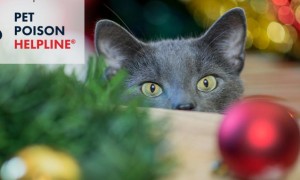Eye Infections in Newborn Kittens
Kittens are adorable, playful, and full of life, but they are also particularly vulnerable to a variety of health issues, especially in their early days. One of the common concerns for new kitten owners is eye infections. Understanding the nature of these infections, their causes, symptoms, and treatments is crucial for ensuring the health and well-being of newborn kittens.
Understanding Eye Infections
Eye infections, also known as conjunctivitis or feline conjunctivitis, occur when the conjunctiva—the thin membrane that lines the eyelids and covers the white part of the eyeball—becomes inflamed. This inflammation can be caused by a variety of factors including bacterial or viral infections, allergies, or irritants. In newborn kittens, eye infections are particularly concerning due to their immature immune systems.
Types of Eye Infections:
-
Bacterial Infections: Often caused by environmental bacteria, these infections can lead to purulent discharge from the eyes. Common bacteria responsible include Chlamydophila felis and various species of Streptococcus.
-
Viral Infections: Feline herpesvirus is one of the leading viral causes of eye infections in cats. Kittens may contract this virus from their mother or through contact with an infected animal.
-
Fungal Infections: Although rare in newborns, certain fungi can also lead to conjunctivitis. Yeast infections, such as Candida, may affect the eyes, especially in immunocompromised animals.
-
Parasitic Infections: Parasites like Toxoplasma can cause issues in cats, although they are less common than other types of infections.
Causes of Eye Infections in Newborn Kittens
Kittens can develop eye infections for various reasons, including:
-
Maternal Factors: If the mother cat has an active eye infection or a viral infection, she can transmit these pathogens to her kittens, particularly during birth or through grooming.
-
Unsanitary Living Conditions: Kittens born in unsanitary environments are more prone to infections. Dust, dirt, and stagnant water can harbor pathogens that affect eye health.
-
Weak Immune Systems: Newborn kittens have immature immune systems, making them more susceptible to infections. This vulnerability can lead to more severe cases of conjunctivitis if not addressed promptly.
-
Injury or Irritation: Foreign bodies, chemicals, or even scratches can irritate the eyes, leading to inflammation and infection.
Symptoms of Eye Infections
Recognizing the symptoms of eye infections in newborn kittens is vital for prompt treatment. Common signs include:
-
Redness and Swelling: The conjunctiva will appear red, and the eyelids may become swollen.
-
Discharge: Kittens may have watery, mucoid, or purulent (pus-like) discharge from one or both eyes. This is often a key indicator of an underlying infection.
-
Squinting or Pain: Kittens may squint or keep their eyes tightly closed, showing signs of discomfort.
-
Rubbing or Pawing at the Eyes: If a kitten is feeling irritation, it may rub its face or paws against its eyes, which can exacerbate the infection.
-
Sensitivity to Light: In severe cases, kittens may display a reluctance to be in bright light, indicating potential eye pain.
-
Change in Behavior: If a kitten becomes lethargic, refuses to eat, or isolates itself from littermates, it could indicate an underlying health issue, such as an eye infection.
Treatment of Eye Infections
If a kitten shows any signs of an eye infection, it is critical to consult a veterinarian as soon as possible. Early intervention is key to preventing more severe complications, including potential vision loss. Treatment modalities may include:
-
Antibiotic Drops or Ointments: For bacterial infections, topical antibiotics are usually prescribed to help eliminate the infection and reduce inflammation.
-
Antiviral Medications: If a viral infection is diagnosed, antiviral medications may be necessary to help manage symptoms.
-
Warming Compresses: A warm, damp cloth applied gently to the eyes can help to soothe the area and clear away discharge.
-
Steroid Drops: In some cases, veterinary doctors may prescribe steroid drops to reduce inflammation.
-
Cleaning the Eyes: Keeping the eyes clean by gently wiping away discharge with a soft, damp cloth is important for maintaining hygiene.
-
Supportive Care: Ensuring that kittens are eating and remaining hydrated is crucial for recovery. In severe cases, hospitalization may be necessary.
Prevention Strategies
Preventing eye infections involves maintaining good hygiene and monitoring the health of the mother cat and her kittens:
-
Maintain Clean Living Conditions: Regular cleaning of the kitten’s environment can minimize exposure to harmful pathogens.
-
Monitor the Mother Cat’s Health: Ensure the mother cat receives regular veterinary care and is free from infections before breeding.
-
Isolate Sick Animals: If a kitten or adult cat shows signs of illness, isolate them to prevent disease transmission.
-
Check for Foreign Bodies: Regularly check the kittens’ eyes for debris or foreign materials that could cause irritation.
-
Vaccinations: Keeping the mother cat and kittens up to date on vaccinations can protect them from viral infections that could lead to conjunctivitis.
Conclusion
Eye infections in newborn kittens are a serious health concern that requires prompt attention and treatment. By understanding the causes, symptoms, and prevention methods, pet owners can play an active role in protecting their furry companions. If you suspect your kitten has an eye infection, always consult a veterinarian for an accurate diagnosis and appropriate treatment. Early intervention can make a significant difference in the health and well-being of your precious kittens.






